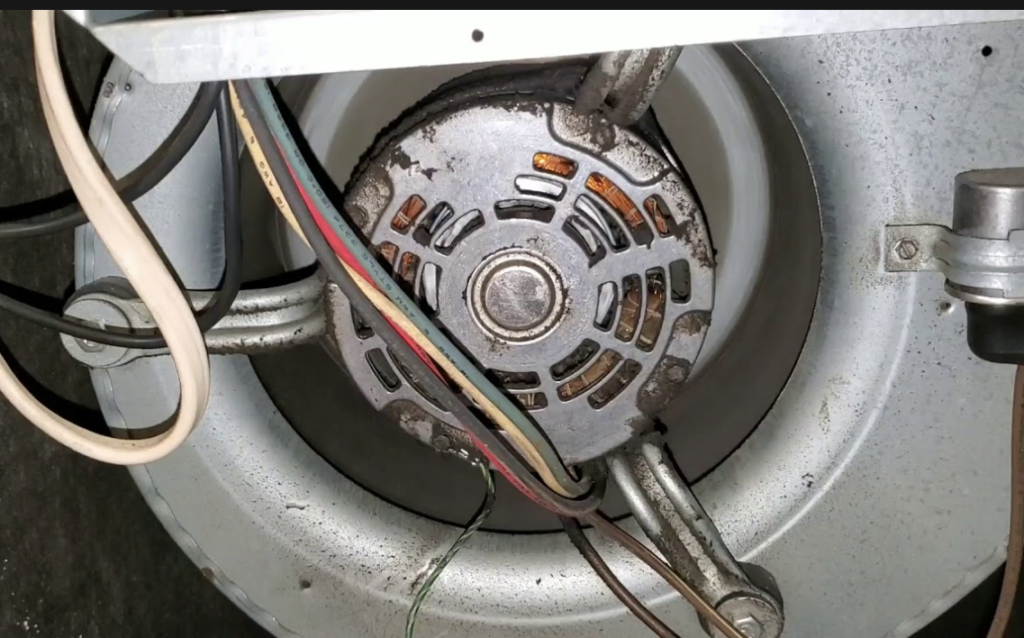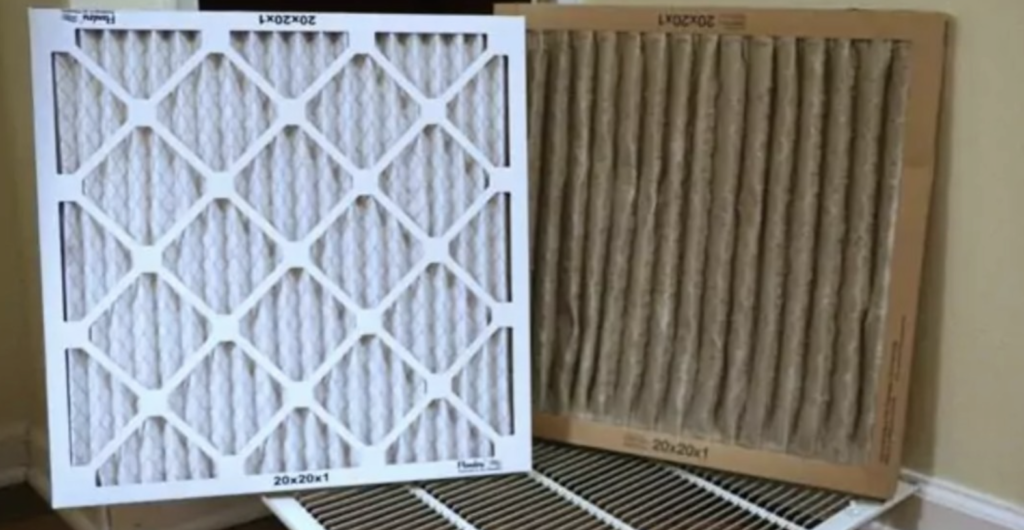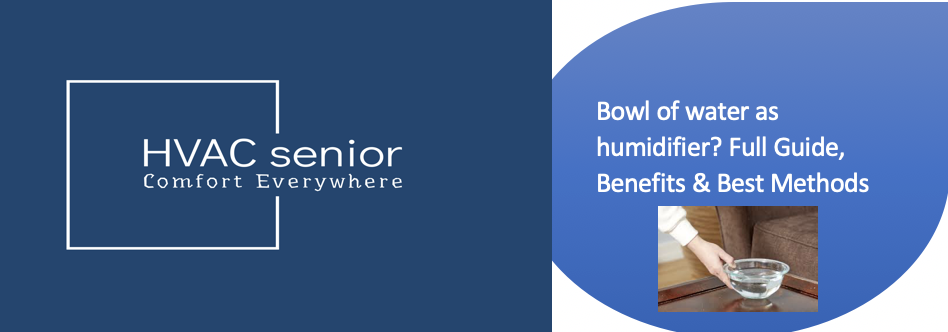Furnace Shuts Off After 30 Seconds? Find out why and Fix it.
Imagine the following situation: You anticipate your dependable furnace to welcome you home to a warm and comfortable atmosphere when you awaken on a frigid winter morning. Your hopes are dashed, though, as Furnace Shuts Off After 30 Seconds.
Homeowners who have had this frequent heating issue are all too familiar with the irritation and suffering that ensue. But don’t worry; we’ll get to the bottom of it to assist you in troubleshooting and resolving the perplexing problem of a furnace that turns off after 30 seconds.
Related post>>>>furnace blowing cold air.
A furnace is more than just a common household item; it is the silent protector who fights the bitter cold and makes sure that your house is a haven of comfort throughout the long winters.
But when it begins to act erratically, such as brief cycling—where it abruptly goes on and off, frequently after only 30 seconds of use—it can make you feel helpless and chilly in your own home.
In addition to being inconvenient, short cycling can increase energy costs, shorten the lifespan of your furnace, and cause uneven heating around your house.
This problem might have a variety of reasons, from small flaws to more serious faults in your heating system. Finding the source of the problem is essential to restarting your furnace and restoring the cozy atmosphere in your home.
This in-depth guide will examine the possible causes of the frustrating issue of a Furnace Shuts Off After 30 Seconds.
We’ll outline the troubleshooting procedures you may use to identify and, in many cases, fix this problem without the need for pricy expert assistance.
As a result, if you’ve ever wondered why your furnace seems to have a 30-second attention span, continue reading to get the reasons and solutions you’ve been looking for.
Your winter comfort is waiting to be regained from short cycling’s grasp just around the corner.
1. Your Thermostat to Blame.
An immediate impact of your furnace shutting off after only 30 seconds of use is frustration and discomfort. While this issue may have a number of underlying causes, one frequently disregarded factor is a broken thermostat.
In this post, we’ll look at how a malfunctioning thermostat can cause the dreaded “Furnace Shuts Off After 30 Seconds” problem and give you the right fixes to get your heating system working properly again.
Role of thermostat in Furnace Operation.
It’s critical to comprehend a thermostat’s function in your heating system in order to understand how it can cause your furnace to short cycle.
Based on the preferred temperature settings in your home, your thermostat serves as the commander, telling your furnace when to turn on and when to shut off.
The thermostat signals the furnace to turn on when the temperature drops below the specified point. In contrast, it tells the furnace to turn off when it notices the desired temperature has been attained.
The Perils of a Bad Thermostat.
This delicate balancing act between your furnace and temperature control might be upset by a broken thermostat, leading to the dreaded “Furnace Shuts Off After 30 Seconds” situation.
How it works is as follows:
- Inaccurate Temperature Readings: A faulty thermostat may provide inaccurate temperature readings, causing it to prematurely signal the furnace to turn off, even though the home hasn’t reached the desired warmth.
- Short-Cycling Trigger: Some thermostats have a built-in feature that prevents short cycling. If this feature is not functioning correctly, it can lead to the furnace turning off after a mere 30 seconds.
- Wiring Issues: Damaged or frayed wires in the thermostat’s circuit can send erratic signals to the furnace, causing it to cycle on and off rapidly.
Solutions to Thermostat Woes.
If you suspect that your thermostat is the reason behind your “Furnace Shuts Off After 30 Seconds” issue, here are some steps to diagnose and solve the problem:
- Calibration: Check if your thermostat is accurately reading the temperature. If not, recalibrate it according to the manufacturer’s instructions.
- Battery Replacement: If your thermostat uses batteries, replace them. Weak batteries can lead to erratic behavior.
- Wiring Inspection: Examine the thermostat’s wiring for any damage or loose connections. If you find any issues, consult a professional to repair or replace the wiring.
- Professional Assessment: If you can’t identify or resolve the problem, it’s advisable to call a qualified HVAC technician. They can conduct a comprehensive assessment and either repair or replace the thermostat as needed.
Also read>>>>Gas wall heater.
2. Defective Blower Motor.

We’ve looked at how a broken thermostat might cause the annoying “Furnace Shuts Off After 30 Seconds” problem. A faulty blower motor is another prominent possibility in this heating system enigma.
In this post’s continuation, we’ll explain how a blower motor problem might result in brief cycling and provide you with the right ways to take back control of your home’s heating system.
The Role of the Blower Motor.
It’s important to comprehend the blower motor’s critical function within your furnace before delving into its potential issues. Warm air is distributed throughout your home via the blower motor.
The blower motor forces the hot air into the ducts when the furnace heats the air, enabling it to circulate throughout the entire house. Maintaining a reasonable indoor temperature requires this technique.
Troubles Caused by a Defective Blower Motor.
A defective blower motor can disrupt the smooth operation of your furnace, leading to the dreaded “Furnace Shuts Off After 30 Seconds” scenario:
- Overheating: If the blower motor doesn’t function correctly, it can overheat quickly. This overheating can trigger a safety feature in your furnace that shuts off the system to prevent damage or a fire hazard.
- Inadequate Air Circulation: A malfunctioning blower motor may not provide enough airflow to distribute the heated air effectively, causing your furnace to shut off prematurely as it struggles to maintain the desired temperature.
- Electrical Issues: Blower motors rely on electrical components to function. If any of these components fail or become damaged, it can result in the blower motor shutting off unexpectedly.
Solutions for Blower Motor Woes.
If you suspect that a defective blower motor is causing your “Furnace Shuts Off After 30 Seconds” issue, here are some steps to diagnose and resolve the problem:
- Inspect for Blockages: Ensure that there are no obstructions in your ductwork or around the blower motor that might be impeding airflow.
- Check Motor Bearings: If the blower motor’s bearings are worn out, it can lead to overheating and shutdowns. Lubricate or replace them as necessary.
- Clean the Motor: Dust and debris can accumulate on the blower motor, causing it to overheat. Clean the motor carefully to remove any buildup.
- Professional Assessment: If you’re not comfortable performing these checks or if the issue persists, contact an HVAC technician. They can conduct a thorough inspection, repair or replace the blower motor, and ensure your furnace operates efficiently.
Also read>>>Why won’t my furnace turn on.
3.Control Board.
We’ve already looked at two probable causes of the annoying “Furnace Shuts Off After 30 Seconds” problem: a broken thermostat and a bad blower motor.
When we explore a second suspect, a defective furnace control board, the mystery becomes more complicated.
In this post’s continuation, we’ll show you how a bad control board can be to blame for your heating system’s short cycling and provide you with the right fixes to get your house warm again.
The Crucial Role of the Furnace Control Board.
It’s critical to acknowledge the control board’s crucial function in order to comprehend how it affects your furnace’s efficiency.
The control board serves as the brain of your heating system, interpreting signals from the thermostat and controlling a number of furnace operations, such as fan operation, ignition, and heat distribution. The entire heating process may be affected if the control board has a problem.
The Havoc Wreaked by a Bad Control Board.
A malfunctioning furnace control board can indeed lead to the frustrating “Furnace Shuts Off After 30 Seconds” scenario:
- Erratic Signals: If the control board fails to interpret signals from the thermostat correctly, it may send incorrect instructions to the furnace, causing it to cycle on and off rapidly.
- Safety Measures: Modern control boards are equipped with safety features that monitor furnace operations. A malfunctioning control board can mistakenly trigger these safety measures, leading to frequent shutdowns.
- Electrical Issues: Any damage or short circuits within the control board can disrupt its ability to control the furnace effectively, resulting in premature shutdowns.
Solutions for Control Board Woes.
If you suspect that a bad furnace control board is the reason behind your “Furnace Shuts Off After 30 Seconds” issue, here are some steps to diagnose and address the problem:
- Check for Error Codes: Modern furnaces often display error codes when there’s an issue with the control board. Refer to your furnace’s manual to interpret these codes and take appropriate action.
- Inspect Wiring and Connections: Examine the wiring and connections on the control board for any signs of damage or loose wires. Tighten connections or replace damaged wiring as needed.
- Reset the Control Board: Sometimes, resetting the control board can resolve minor issues. Consult your furnace’s manual for instructions on how to perform a reset.
- Professional Assistance: If you’re uncertain about any of these steps or if the problem persists, it’s advisable to contact a qualified HVAC technician. They can conduct a thorough assessment of the control board, repair or replace it, and ensure your furnace operates reliably.
4. Rust and Corrosion.
In our never-ending quest for solutions to the perplexing issue of Furnace Shuts Off After 30 Seconds,we have discovered yet another possible adversary lurking inside your heating system: rust and corrosion.
Although rust and corrosion may not be the first thing that springs to mind, they can in fact cause the sudden shutdowns that leave your home icy.
In this post’s continuation, we’ll explore how these enemies might impair the efficiency of your furnace and give you the necessary tips for regaining your home’s consistent warmth.
The Threat of Rust and Corrosion.
Any metal part of your furnace is vulnerable to rust and corrosion, which can affect anything from the burner assembly to the heat exchanger and even the electrical connections.
These nefarious forces can result in the dreaded “Furnace Shuts Off After 30 Seconds” situation when they get control:
- Burner Assembly: If rust or corrosion infiltrates the burner assembly, it can disrupt the combustion process, leading to erratic flame patterns and, ultimately, furnace shutdowns.
- Heat Exchanger: The heat exchanger is particularly vulnerable to corrosion, as it’s exposed to the combustion process. Corroded heat exchangers can develop cracks, which pose a serious safety risk and can trigger shutdowns.
- Electrical Connections: Corrosion on electrical terminals and wires can disrupt the flow of signals within your furnace, causing intermittent issues, including short cycling.
Solutions to Combat Rust and Corrosion.
To combat the pernicious effects of rust and corrosion and prevent the relentless “Furnace Shuts Off After 30 Seconds” cycle, consider the following steps:
- Regular Inspection: Schedule routine inspections of your furnace by a qualified HVAC technician. They can identify and address corrosion issues before they escalate.
- Humidity Control: Maintaining the right level of humidity in your home can help reduce the risk of corrosion. Consider using a humidifier to keep indoor humidity within the recommended range.
- Annual Maintenance: Invest in annual furnace maintenance, which typically includes cleaning and inspecting critical components for signs of corrosion. This proactive approach can extend the life of your furnace and ensure it operates efficiently.
- Replacement of Corroded Parts: If corrosion has already taken hold, your technician may recommend replacing affected components, such as the heat exchanger or corroded wiring.
5.Bad Flame Sensor.

The flawed flame sensor makes a spectacular comeback as a potential offender in our unwavering quest to solve the frustrating enigma of Furnace Shuts Off After 30 Seconds.
This tiny but crucial part keeps causing chaos in your heating system, plunging you deeper into the pit of sudden shutdowns.
In this post, we’ll go over how the defective flame sensor contributed to this problem and provide you with vital answers to help you make your home comfortable once more.
Revisiting the Role of the Flame Sensor.
The flame sensor in your furnace is a sentinel of safety, as was already mentioned.
Its task is straightforward: as soon as the burners light up, it must identify the presence of a flame. It alerts the control board to turn off the furnace if it is unable to perform this duty.
This system stops the potentially dangerous condition of unburned gas entering your home.
The Relentless Troubles Caused by a Bad Flame Sensor.
A malfunctioning flame sensor remains a chief suspect in the persistent “Furnace Shuts Off After 30 Seconds” conundrum:
- Soot and Debris Buildup: Over time, the flame sensor can accumulate soot, dirt, or debris. This buildup can lead to false readings, causing the sensor to think there’s no flame when the burners are, in fact, lit.
- Corrosion and Oxidation: While flame sensors are typically constructed from stainless steel for durability, even they can fall victim to corrosion or oxidation. Such deterioration can impair the sensor’s ability to accurately detect the flame.
- Faulty Wiring: Loose or damaged electrical connections to the flame sensor can result in erratic readings, leading to premature furnace shutdowns.
Solutions to Tame the Rogue Flame Sensor Once More.
To reclaim control over the rogue flame sensor and put an end to the relentless Furnace Shuts Off After 30 Seconds cycle, consider these solutions:
- Thorough Cleaning: Often, a dirty or soot-covered flame sensor can be rejuvenated with a simple cleaning using fine-grit sandpaper or emery cloth. Always turn off power to the furnace before attempting this.
- Corrosion Check: Examine the flame sensor closely for any signs of corrosion or oxidation. If significant corrosion is present, replacement may be necessary.
- Connection Verification: Ensure all electrical connections to the flame sensor are secure and free from damage. Replacing frayed wires or tightening loose connectors can resolve connection-related issues.
- Professional Intervention: When cleaning and inspecting the flame sensor don’t produce results, it’s prudent to seek the expertise of an HVAC technician. Their comprehensive assessment can lead to either cleaning, repairing, or replacing the flame sensor as the situation dictates.
6. Dirty Air Filters.

As we delve more into the puzzling case of “Furnace Shuts Off After 30 Seconds,” we come upon a surprisingly frequent but frequently disregarded suspect: unclean air filters.
These ostensibly inconsequential parts can have a substantial impact on your heating system, causing those inconvenient and frigid shutdowns.
In this post, we’ll examine how clogged air filters may be to blame for this well-known problem and provide you with the necessary fixes to get your home warm again.
Understanding the Role of Air Filters.
Air filters play a crucial role in your furnace’s operation. Their primary mission is to trap dust, debris, and airborne from entering your heating system.
This not only maintains indoor air quality but also prevents contamination of essential furnace components, such as the blower motor and heat exchanger.
The effect of Dirty Air Filters.
When air filters become clogged and filthy, they can set the stage for the relentless “Furnace Shuts Off After 30 Seconds” dilemma:
- Restricted Airflow: Dirty air filters impede the flow of air into your furnace. This reduction in airflow can lead to the furnace overheating, triggering a safety mechanism that causes it to shut off prematurely.
- Strain on Components: With restricted airflow, your furnace’s components must work harder to maintain proper operation. This added strain can result in shutdowns as the furnace struggles to meet heating demands.
- Inefficient Heating: Reduced airflow also means that less warm air circulates through your home, making it difficult for the furnace to reach the desired temperature, resulting in short cycling.
Solutions to Combat Dirty Air Filters.
To put an end to the relentless “Furnace Shuts Off After 30 Seconds” cycle caused by dirty air filters, consider these solutions:
- Regular Filter Replacement: Adhere to a strict schedule for replacing your furnace’s air filters. The frequency of replacement depends on factors like the type of filter, usage, and the presence of pets or allergens. Typically, filters should be changed every one to three months.
- Upgraded Filters: Consider using higher-quality air filters designed to capture finer posts and reduce clogging. Just ensure they are compatible with your furnace.
- Check for Proper Fit: Ensure that your air filters are the correct size and fit snugly within the filter housing. Ill-fitting filters can allow unfiltered air to bypass the system.
- Professional Inspection: If you suspect that your furnace has suffered damage due to prolonged use of dirty air filters, or if the problem persists despite filter replacement, consult an HVAC technician. They can assess your system for potential damage and perform any necessary repairs.
Conclusion.
The frustrating issue of a furnace shutting off after 30 seconds can be a daunting problem for homeowners, often leaving them in discomfort during the cold winter months.
However, by exploring the common causes and potential solutions discussed in this post, we can work towards resolving this perplexing issue.
Understanding that a furnace shutting off after 30 seconds can result from various factors is the first step towards a resolution.
It might be due to a dirty air filter restricting airflow, a malfunctioning thermostat, or even a problem with the ignition system. Identifying the root cause is essential in addressing the problem effectively.
Regular maintenance plays a crucial role in preventing the recurrence of the furnace shuts off after 30 seconds” issue.
Changing air filters, cleaning components, and scheduling professional inspections can keep your furnace in optimal condition, ensuring it operates smoothly throughout the heating season.
Moreover, troubleshooting and DIY solutions, such as checking for loose wires or resetting the furnace, can be helpful in certain cases where the problem is minor.
However, when dealing with more complex issues, seeking professional assistance is highly recommended. HVAC technicians possess the expertise and equipment needed to diagnose and repair intricate furnace problems accurately.
A furnace shutting off after 30 seconds can be a frustrating and disruptive issue, but it’s one that can often be resolved with the right knowledge and approach.
By addressing common causes, performing regular maintenance, and knowing when to seek professional help, homeowners can ensure their furnaces provide reliable and efficient heating, eliminating the inconvenience of the scenario.
Remember, a warm and comfortable home is within reach with the right strategies in place.









